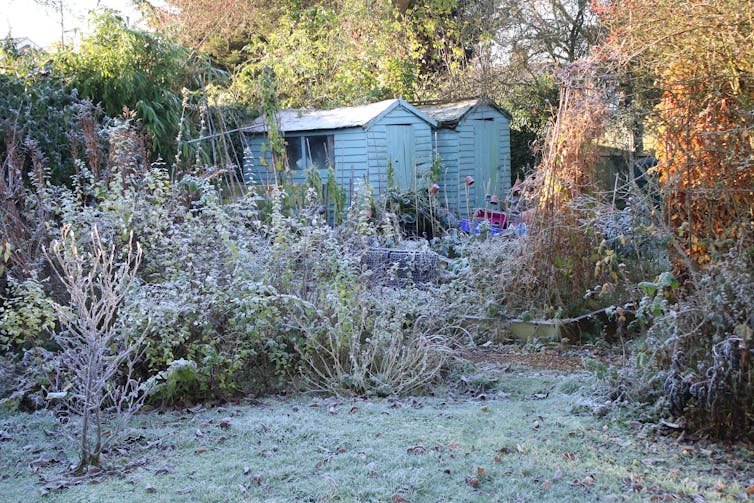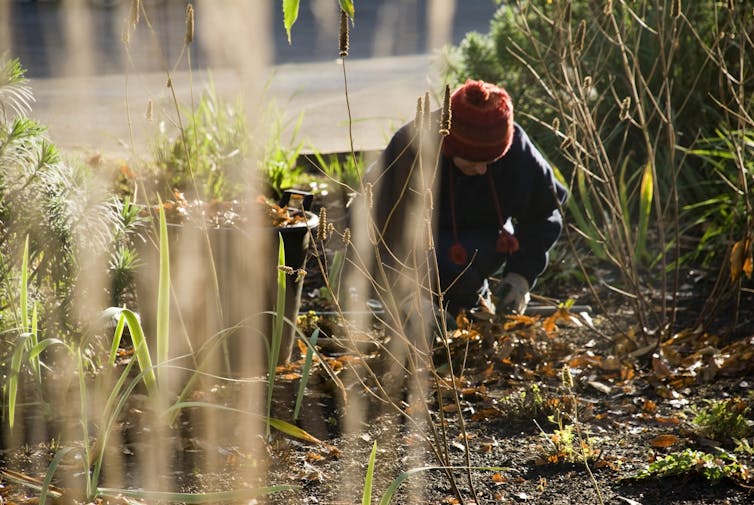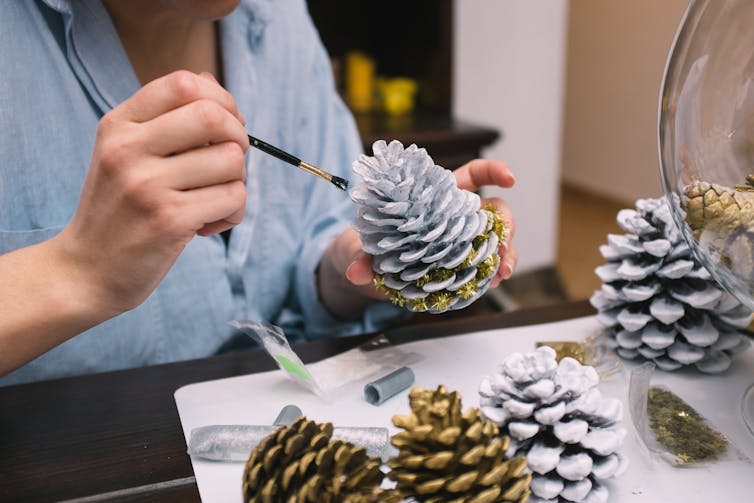How to Connect with Nature and Improve your Mental Health this Winter
 By Tania Wiseman, University of Brighton
By Tania Wiseman, University of Brighton
This year more than any other we’ve been reminded that access to outdoor private space is a privilege – not all of us have a home with a garden. But many of us have also spent more time outdoors in nature and felt a greater sense of connection with the trees, plants and the natural world.
With this in mind, I’ve pulled together some tips on how you can nurture your mental health through nature. These ideas will work for all gardens (both public and private) – from the smallest patch to a stately home.
Reflect
Nature connects us in complex ways. And stopping to think about this connection is one way you can get in tune with the natural world around you. In your garden or local park, walk a path that has been walked before, you could choose an ancient path and consider all the people that have walked that way before. Or choose a route you have walked with someone you care about.
If you have a garden, think about people who have contributed to it, take a slow careful tour, focus on each plant – how did it come into the garden? Show appreciation for it and its story, send a mental message of thanks to the person who gifted it, or inspired its adoption.
[do_widget id=text-16]

Reflect on what you can see around you. Carmina_Photography
The certainty of the rhythmic cycle of the seasons can also help to connect us to a better future. Gardening is inherently related to nature’s cycles. Gardening is continuous and can be characterised as “quiet sustainability” or quiet activism. Through the act of willing things to grow we are imagining that spring and summer will come and there will be renewal. Don’t worry about the look of the garden, just focus on what it means to you in this season of bare branches and empty flowerbeds.
Harvest and tidy
Gardeners often share and gift their surplus vegetables, plants and seeds with family, friends and neighbours. In this sense then, gardening doesn’t have to be an expensive hobby – many gardeners base their acquisition of plants and seeds on mutual exchange with other gardening enthusiasts within their community.
If you bear the responsibility of a garden, then you will also appreciate the pleasure of a newly cleared patch. So, whether there is obvious produce or not, get to work. Tidy, weed and collect up seed pods and cases, use paper bags or envelopes to store them.

There’s still plenty you can do in the garden during winter. Image Conscious/Shutterstock
Don’t worry if you are unsure which plant they came from, take a picture or draw a map of the spot. You can return to it in the spring if your seedlings start to sprout and you’re still not sure what they are. Allow your seeds to dry thoroughly and spend time on rainy afternoons trying to identify them. Reflect on the wonder that each tiny speck will become the producer of thousands of new seeds.
Nurture
Gardening is experienced as both a long-term project – transformations of the garden may take years to achieve – and as a spontaneous and intrinsically rewarding activity. Many gardeners endure chore-like aspects such as weeding as part of their overall project of caring for the garden – which reciprocally appears to care for them.
Nurturing acts can include transforming pine-cones into bird feeders by squeezing fats and seeds into their spaces and hanging them where you can see them. Piles of dry twigs can also be made into excellent hotels for beneficial garden insects and bigger piles may attract hedgehogs.
You can also care for the earth by making your own Christmas decorations from garden leaves and other things you find outdoors.
Play
In a recent study of Danish allotment gardening, people thought of going to their garden patch as an “escape” – and used terms such as “refuge”, “oasis” and “haven” to describe their plot. Many gardeners also highlighted the sense of freedom access to outdoor space gave them – along with a chance to relax and mentally unwind.
So give yourself permission to play and disconnect. Get muddy, dig and weed, move and organise, have fun, get sweaty. If something catches your eye – a strange insect or curious seed case – stop and stare. Be in the moment, allow wonder and childlike feelings and sensory experiences, colours and smells, to fill your mind. Even when it’s not fun, it’s satisfying.

You can easily make your own Christmas decorations with pine cones and paint. viki2win/Shutterstock
Though many garden tasks can be enjoyable in their own right, sometimes it can be a bit of chore – like outdoors housework. But letting your imagination roam while doing those necessary, but boring jobs can add a layer of meaning and help to create a sense of purpose in the overall project of tending the garden.
For example you could plan your next holiday while raking leaves, or imagine a beautiful spring border when planting bulbs. Allowing the imagination to roam allows you to create enjoyment in a mundane task. And this sense of delayed gratification is an essential feature of gardening. It doesn’t matter if the enjoyment is in the task itself or in the freedom it gives to let the mind wander – just the fact you’re doing it is enough.![]()
Tania Wiseman, Principal Lecturer, School of Health Sciences, University of Brighton
This article is republished from The Conversation under a Creative Commons license. Read the original article.
Top image: kovop58/Shutterstock


